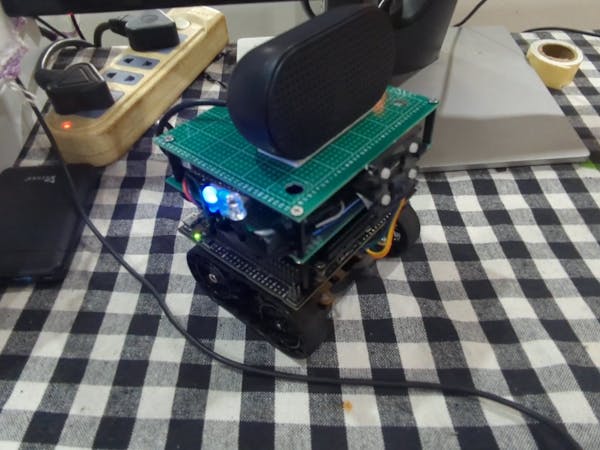If you are anything like me, sometimes you might just need a good excuse to dig into a technology that is of interest to you. It may not be that you have anything particular in mind that you want to build with it, but you just want to experiment and see what is possible. You never know when that knowledge might come in handy down the road, after all.
If you have been feeling the urge to dive into robotics and computer vision, but are not sure where to get started, then a recent project built by hardware hacker Nithin PS is worth checking out. Nithin has designed a small and relatively simple robot called Zumo-Jetson that can not only drive around on some cool miniature tank treads, but that can also learn to visually recognize objects on the fly.
A closer look at the hardware (📷: Nithin PS)
The cute little robot is powered by an NVIDIA Jetson Nano single-board AI computer. This rides on top of an assembled Zumo Chassis Kit equipped with a pair of Pololu Micro Metal Gearmotors. An Arduino Nano RP2040 Connect was utilized to interface with the motor drivers, which control the robot’s locomotion. A Raspberry Pi Camera Module 2 gives the robot vision capabilities, and a microphone and speaker allow for interactivity. Power is provided by four “AA” batteries.
The object recognition capability was developed in an unorthodox manner, but it is quite interesting all the same. It is centered around a Python library developed by Nithin that is called pyrebel. This software seeks to support computer vision applications by creating abstractions (or simplified versions) of what it sees. Once an abstraction has been “remembered” it can then be recognized again at a later time.
To teach the system a new object, it must be colored blue. Once a blue object is placed in front of the camera, pyrebel will create and store an abstraction of it. After that, it will ask the user to say the name of the object it was shown, which it will record. To recall a known object, it must be shown something that is green. Once a match is found, the robot will play the recording of the user saying its name.
In the project write-up, Nithin lists all of the hardware that is needed, and walks through the installation of the software. It does not look like it would take a lot of effort, so the Zumo-Jetson could be a great way to dip your toes into the world of robotics and computer vision. And since it comes equipped with a Jetson Nano, it will be ready to run more traditional and complex computer vision algorithms when you are.
